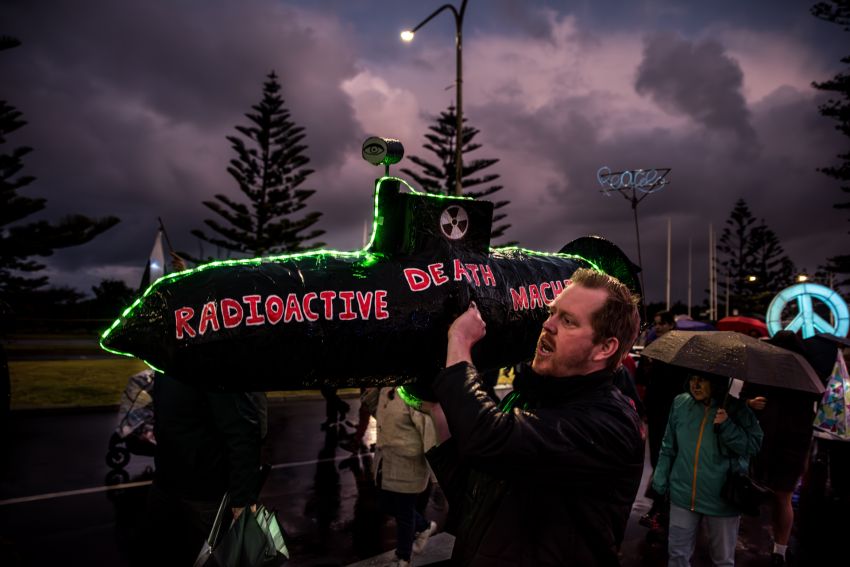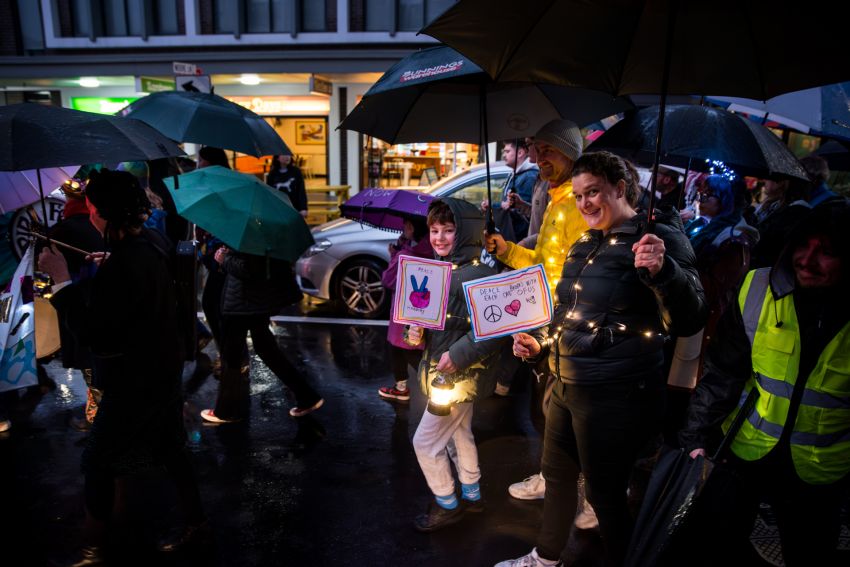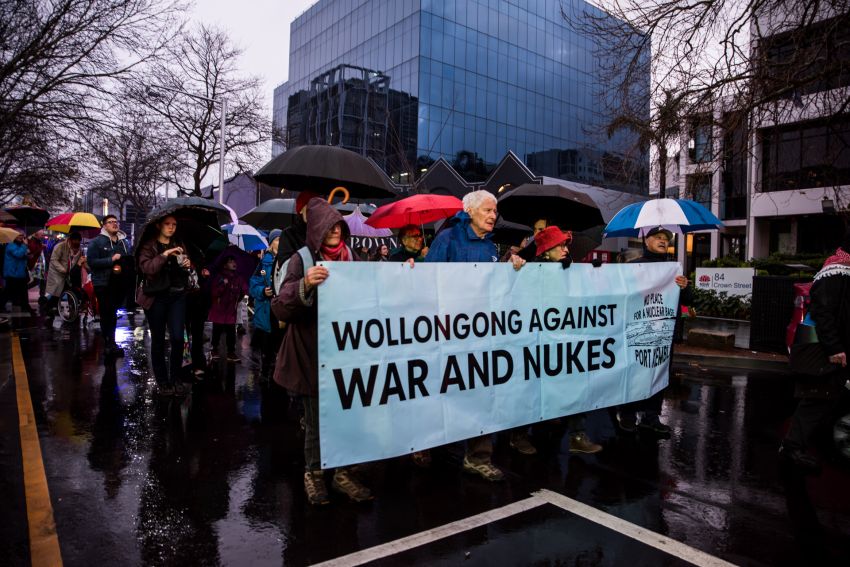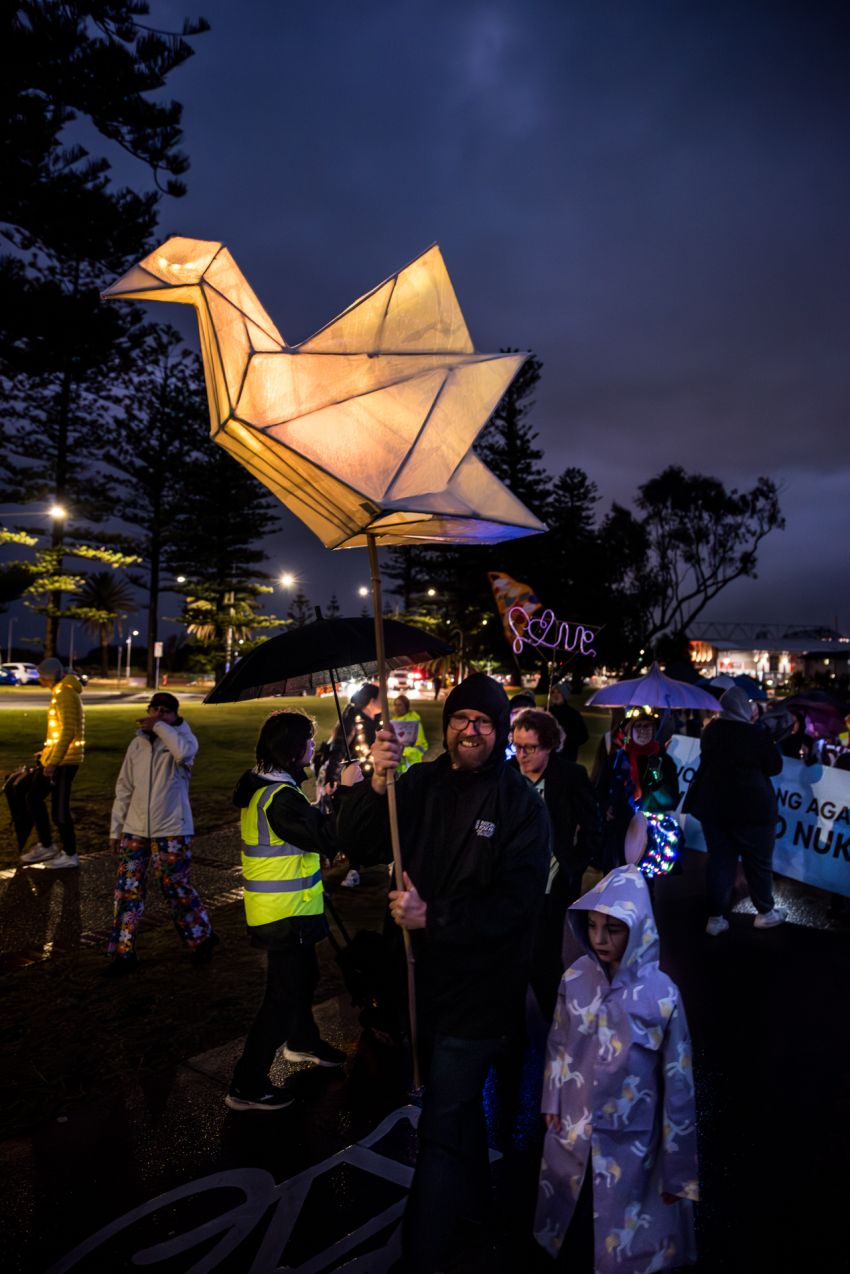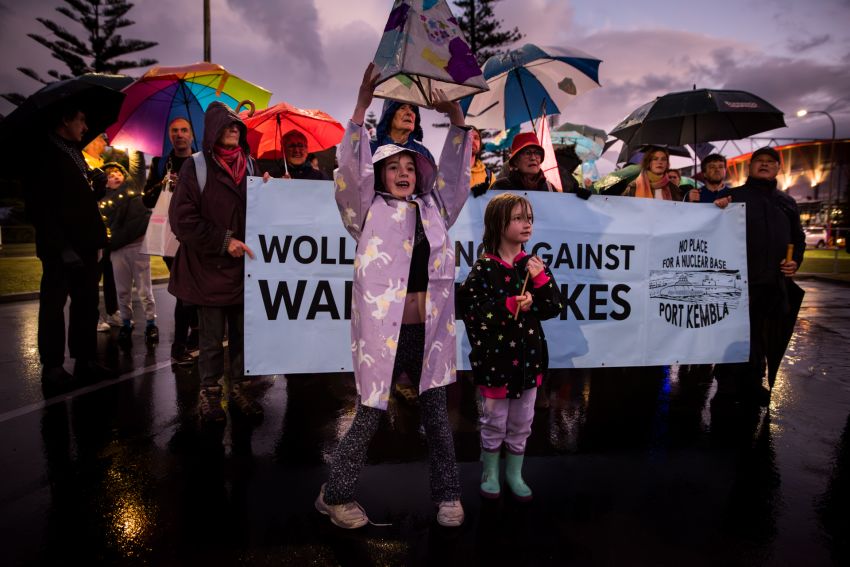
More than 100 people braved the rain and cold on August 9 for a lantern parade through the Tharawal/Wollongong CBD to remember the victims of war, past and present, and to demand a future without war.
The march was held on the day the world remembers as “Nagasaki Day”, after the second atomic bomb dropped on the city three days after the first blast at Hiroshima, 80 years ago.
It was organised by Wollongong Against War and Nukes (WAWAN), which has been fighting AUKUS and the threat of a nuclear submarine base in Port Kembla Harbour since 2022.
WAWAN member and artist Sharon Pusell crafted a number of large lanterns in the shape of a crane, peace sign and heart — universal symbols of peace. Participants also made and decorated their own lanterns, and many highlighted opposition to the genocide in Gaza.
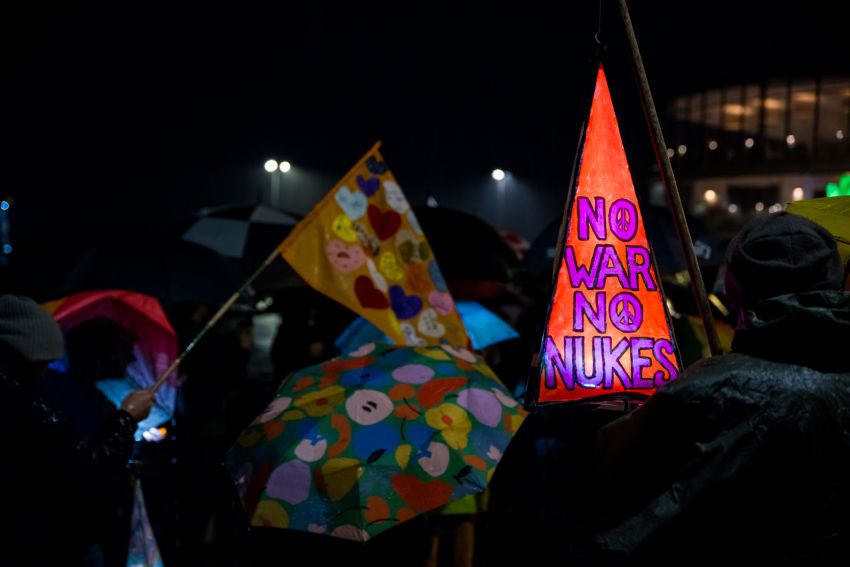
Rally chair Gem Romuld, WAWAN member and director of the International Campaign for the Abolition of Nuclear Weapons, said the lanterns also reference the Hiroshima tradition of floating lanterns on the river, started by survivors of the blast as a way of marking the horror, and that has continued each year on August 6.
Tharawal’s annual Hiroshima Day commemoration has been held every year since 1986, when it won an award for its contribution to the United Nations International Year of Peace.
Wollongong City Council first declared the city nuclear-free in 1980.
The city affirmed its commitment to peace and nuclear disarmament this year, with City of Wollongong mayor Tania Brown addressing the parade. Long-term peace activist and socialist Dr Margaret Perrott, continuing a Hiroshima Day Committee tradition, called a public commemoration on the morning of August 6, at the time the bomb was dropped, near where the UN International Year of Peace plaque stands. A small group of peace activists and the Illawarra Union Singers marked the occasion with peace songs.
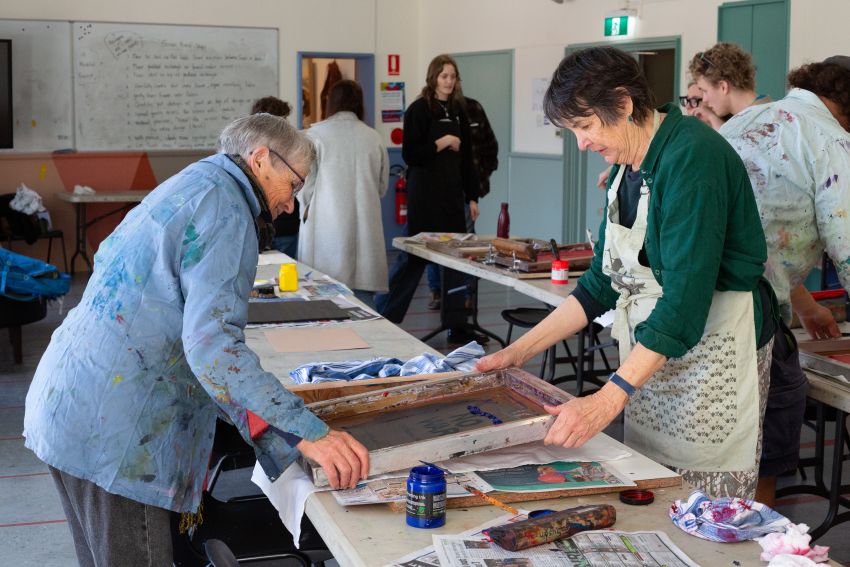
An activist residency was also undertaken this year as part of the “Greetings from Wollongong” exhibition at the Wollongong City Gallery. The exhibition focuses on artefacts from the culture of rebellion in 1980s Wollongong, including the films of Mary Callaghan and the screen print posters of the Redback Graphix collective.
Recognising the centrality of activist politics to these works, the curators saw an opportunity to connect the gallery with contemporary activism.
WAWAN’s near-three-week residency, coinciding with the lantern parade, followed earlier residencies by an anti-fascist collective and Wollongong Friends of Palestine.
It hosted workshops over three consecutive weekends, including screen printing, badge making, a children’s activities’ day and a Beats Not Bombs concert in the Chambers Gallery.
Lantern-making, and other workshops, were organised throughout the residency, with WAWAN members interacting with hundreds of people.
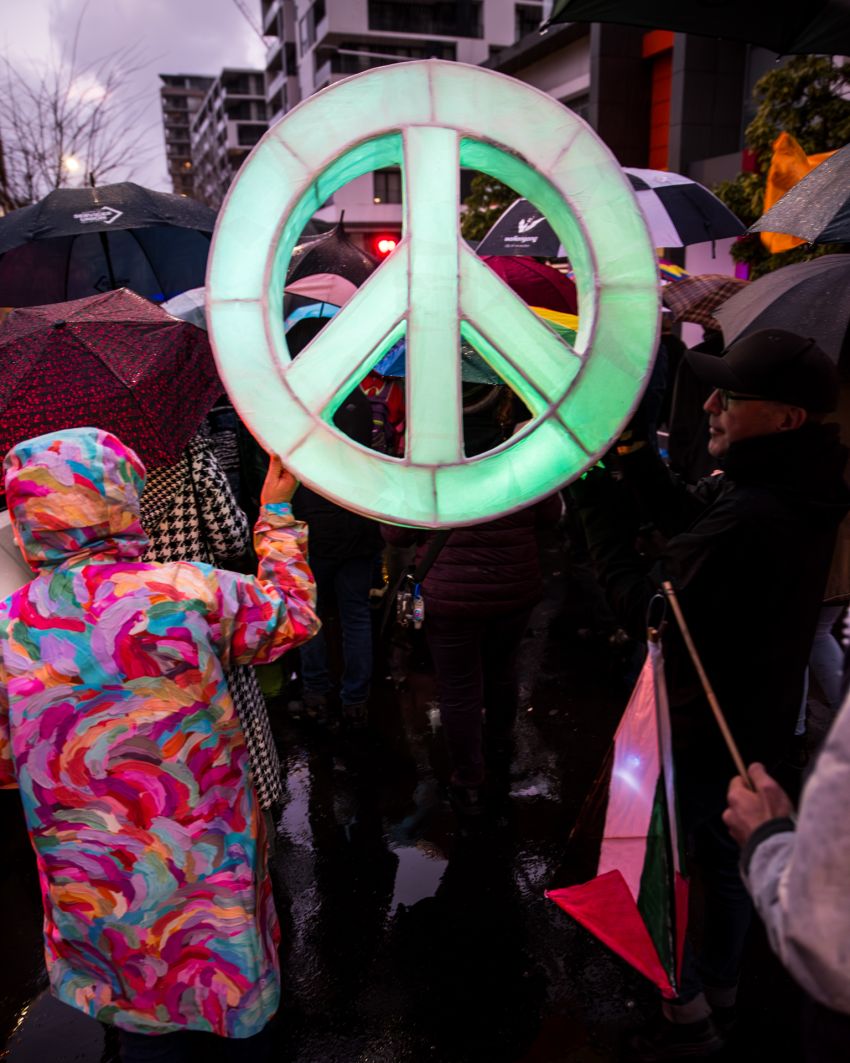
Wollongong City Library also remembered the 80th anniversary of Hiroshima and Nagasaki. WAWAN members worked closely with library staff on the Peace Movement Illawarra exhibition, which chronicles Tharawal’s history of peace activism in photographs, oral histories and objects, including badges, flags, t-shirts and other ephemera.
More than 60 people gathered on July 28 for a talk on this history, a part of the exhibition that launched the new Wollongong: City of Peace booklet. The exhibition included stations at every branch library for patrons to fold origami cranes for the library to send the Peace Park in Hiroshima. One thousand paper cranes were made.
There was a performance of Japanese kamishibai stories, including the recent work Your Voice Alive by United States-born and Hiroshima-based writer Arthur Binard. This kamishibai tells the story of what happened at Hiroshima in a way that makes it relatable to children, by taking the perspective of a cat. It uses images taken from The Hiroshima Panels, a series of mural works created in response to the atomic bombing horror by Japanese artists Iri and Toshi Maruki.
The gallery residency, library exhibition and lantern parade marked a significant development in WAWAN’s three-year campaign to revive Tharawal’s historic peace movement in opposition to the AUKUS pact and an east coast submarine base.
As we witness the genocide in Gaza, and a world descending deeper into fascism and war, creative protest and coalition-building helps build a strong and sustainable peace movement that stands on the shoulders of movement elders, in the quest for ecological sustainability and a just peace.
[Alexander Brown is a member of Wollongong Against War and Nukes.]
